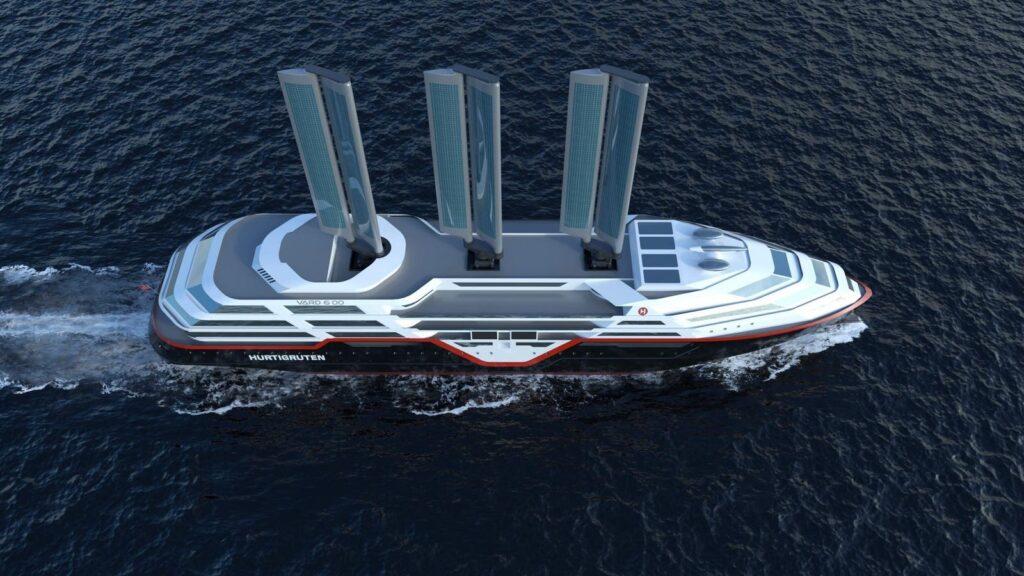
Shipping Goes Back to the Future – With Sails
In a groundbreaking move, shipbuilders are making a comeback of sorts by reinstalling sails on commercial vessels. Yes, you read that right – sails! It’s been over a century since these were last seen on board, but with the world’s growing concern for climate change and emissions reduction, it seems we’re witnessing a remarkable twist in history.
Hurtigruten, the polar exploration company, has partnered with Selar to build large container ships that will be entirely powered by wind power. This new development could potentially have a significant impact on reducing carbon emissions in the shipping industry. According to a recent report, commercial shipping currently generates an astonishing 940 million tonnes of CO2 each year.
The International Maritime Organisation (IMO) has adopted a strategy to reduce these emissions by at least 40 per cent by 2030. This plan involves increasing the adoption of zero or near-zero emission technologies, which should account for at least 10 per cent of energy used in international shipping by the end of the decade.
As the logistics industry and their customers work tirelessly to cut emissions, measures like wind wings and other innovative solutions can’t come fast enough. Maersk, a Danish shipping company, has already made significant strides in this regard. They have been operating their large container ship, Laura Maersk, entirely on green methanol since 2023.
Maersk has also ordered eight larger carbon neutral ships that will run on the same fuel source from Hyundai Heavy Industries. Furthermore, they’ve recently commissioned 20 dual-fuel vessels equipped with methanol and liquefied gas dual-fuel propulsion systems, which are set to arrive between 2028 and 2030.
According to Maersk’s estimates, using lower-emission methanol can reduce GHG emissions by at least 65 per cent compared to conventional fossil fuels. However, it’s essential to note that the environmental benefits of this approach depend on how the methanol is produced.
As we continue to navigate these uncharted waters, companies are exploring other innovative ways to make shipping more sustainable. Advances in design have led to more hydrodynamic hulls, special coatings to reduce friction from water, air lubrication systems creating a layer of bubbles to decrease drag and fuel use, as well as more efficient propellers or fully electric propulsion vessels.
Despite the progress made so far, it’s clear that there is still much work to be done.
Source: www.forbes.com


